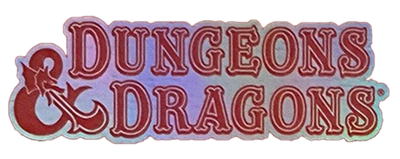| Hydravise | |
|---|---|
| Size/Type: | Huge Plant |
| Hit Dice: | 16d8+144 (224 hp) |
| Initiative: | +4 |
| Speed: | 10 ft. (2 squares) |
| Armor Class: | 27 (-2 size, +4 Dex, +15 natural), touch 12, flat-footed 23 |
| Base Attack/Grapple: | +12/+33 |
| Attack: | 8 bites +18 melee (3d8+13 plus 2d6 acid) |
| Full Attack: | 8 bites +18 melee (3d8+13 plus 2d6 acid) |
| Space/Reach: | 15 ft./30 ft. |
| Special Attacks: | Acid, extended reach |
| Special Qualities: | Acid immunity, blindsight 120 ft., fire vulnerability, linked minds, plant traits, regeneration 20, tremorsense 60 ft., SR 26 |
| Saves: | Fort +23, Ref +17, Will +12 |
| Abilities: | Str 36, Dex 19, Con 28, Int 3, Wis 12, Cha 14 |
| Skills: | Listen +20*, Spot +20*, Survival +8 (+10 underground) |
| Feats: | Alertness, Awesome Blow, Combat Reflexes, Improved Bull Rush, Improved Natural Attack, Power Attack |
| Environment: | Any land or underground |
| Organization: | Single |
| Challenge Rating: | 14 |
| Treasure: | None |
| Alignment: | Usually neutral |
| Advancement: | 16-40 (Huge) |
| Level Adjustment: | None |
This huge plant seems to slither out of the ground before blooming into a horrific monster with eight massive heads resembling purple Venus flytrap flowers. Each head possesses a wide mouth filled with rows of vicious, cutting teeth that drip with acidic saliva. The plant opens its eight giant maws wide and attacks.
The hydravise is an Underdark offshoot of the greenvise (Monster Manual II, 120) that has adapted to feed off of living flesh to replace sunlight when it is deprived of nutrients. Its ferocity was well-noted by Underdark herbalists, who brought its seeds to the surface to sell them as guardians and weapons. A hydravise resembles a giant, purple, eight-headed Venus flytrap with vicious, cellulose-formed teeth that look like five-inch long thorns. Each of its eight heads release an acidic substance that is extremely potent and corrosive.
Combat
With the multiple heads and extraordinary healing abilities of their hydra counterparts, hydravises are notoriously difficult to kill, making them attractive prospects to those looking for sentries. Its eight heads are mounted on stalks that are over 30 feet in length. There are two ways of killing a hydravise: either targeting the body (a perilous and difficult task due to its quick healing abilities) or all of its eight heads. Each head has a number of hit points equal to the body’s maximum hit points divided by 10 (224/10 = 22.4, rounded down to 22), but will regenerate (see description below) if fire damage is not added to kill it. Just like a hydra, a hydravise can attack with all of its heads at no penalty.
Acid (Ex): Corrosive acid is present in the hydravise’s saliva and oozes from its every pore. A hydravise’s bite attack deals 2d6 acid damage per hit, and any creature grappling with the hydravise or attacking it with a natural weapon or unarmed attack take 1d10 points of acid damage (a grappling creature takes this damage every turn it is grappling with the hydravise).
Blindsight (Ex): A hydravise is effectively blind, but it maneuvers and fights as well as a sighted creature by using its other senses. This ability enables it to discern objects and creatures within 120 feet. The hydravise usually does not need to make Spot or Listen checks to notice creatures within range of its blindsight, but it must have a line of effect to the creature to see it. Even it does not see a creature via blindsight the hydravise may be able to see it with its tremorsense ability (see below).
Extended Reach (Ex): Despite being only a Huge creature, a hydravise’s long stalks that support its multiple heads are capable of extending beyond its normal reach. A hydravise’s reach is always double its space.
Fire Vulnerability (Ex): A hydravise takes an additional 50% damage from fire spells and fire-based attacks.
Linked Minds (Ex): A hydravise’s eight heads allow it to look in every direction at once, granting it a +8 racial bonus on Listen and Spot checks. Combined with its powerful senses, a hydravise’s heads think cooperatively. It cannot be flanked or surprised.
Plant Traits (Ex): A hydravise is immune to poison, sleep, paralysis, stunning, and polymorphing. It is not subject to critical hits or mind-affecting affects. Unlike other plants, a hydravise is blind, so it does not have low-light vision, but it is also immune to any illusion or gaze effect that requires the target to have eyes.
Regeneration (Ex): Fire deals normal damage to a hydravise. A hydravise that loses a head regrows the head in 1d4 rounds unless the head is cauterized with fire first. An area fire effect such as a fireball spell can damage multiple heads as well as doing damage to the body. Unlike a hydra or shrieking terror, a hydravise does not grow two heads from the stump of one; only one new head replaces one lost.
Tremorsense (Ex): A hydravise is sensitive to vibrations in the ground and can automatically pinpoint the location of anything that is in contact with the ground and within range. If no straight path exists through the ground from the creature to those that it’s sensing, then the range defines the maximum distance of the shortest indirect path. It must itself be in contact with the ground, and the creatures must be moving. As long as the other creatures are taking physical actions, including casting spells with somatic components, they’re considered moving; they don’t have to move from place to place for a creature with tremorsense to detect them.
